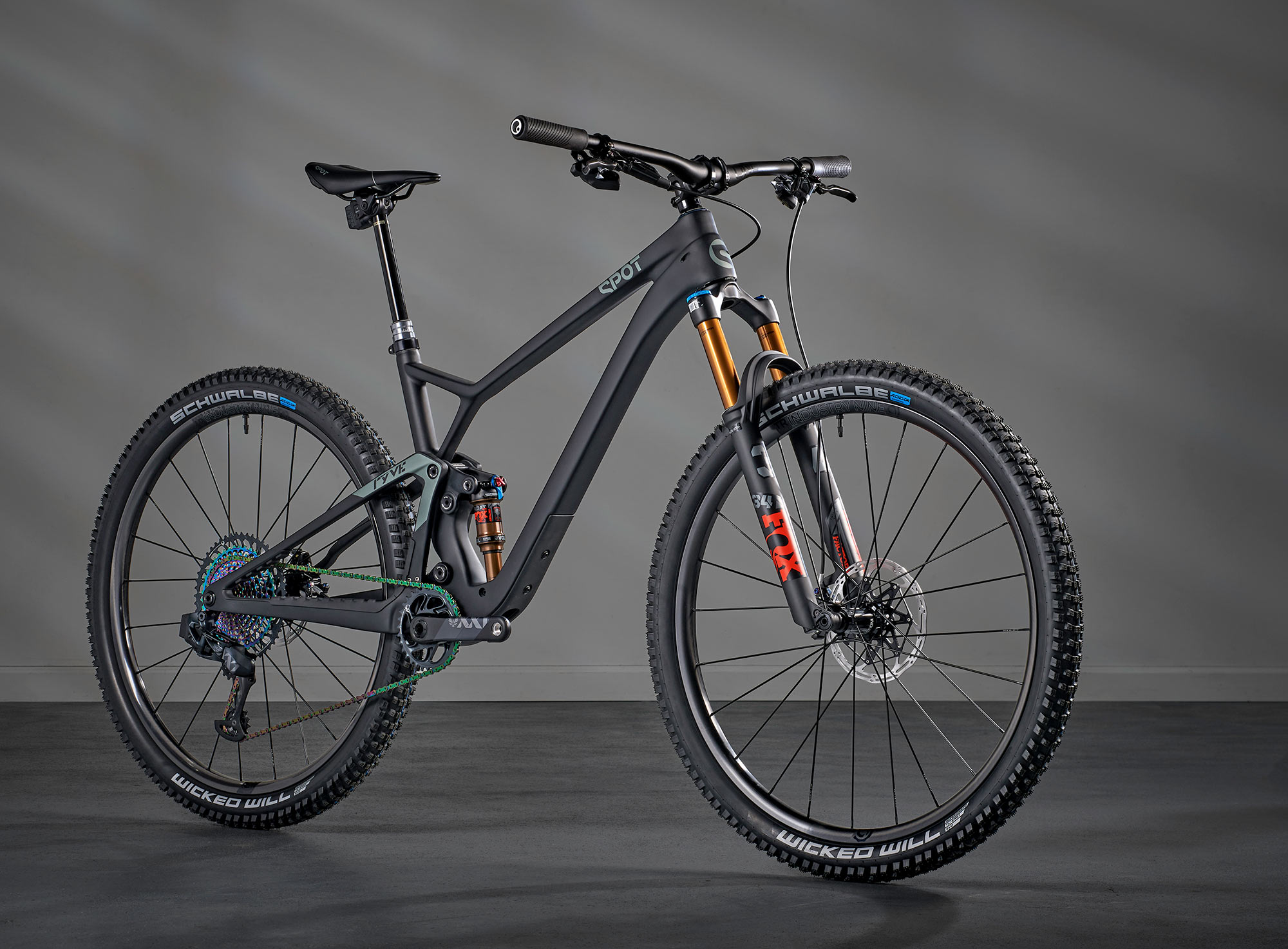The Spot Ryve launched with two iterations, a 100mm XC bike, and a slightly longer 115mm marathon version that used 120mm forks. Both relied on their unique Living Link suspension platform, and both were aimed at racers.
Now, the longer Ryve 115 gets a little more trail oriented, with revised kinematics and geometry, a stiffer frame, and a bump to 130mm forks. Spot tells us the frame is 28% stiffer laterally and torsionally, and the suspension is 25% more progressive for better mid-stroke performance. Here’s how they did it…

Visually, the 2nd generation Ryve 115 looks very similar to the original. Key differences are a new upper rocker linkage that uses the same oversized thru axle as the main pivot. The V1 didn’t connect from side to side where the seat stays attach to the rocker, so this new hollow axle is likely a big part of the improved frame stiffness claims.
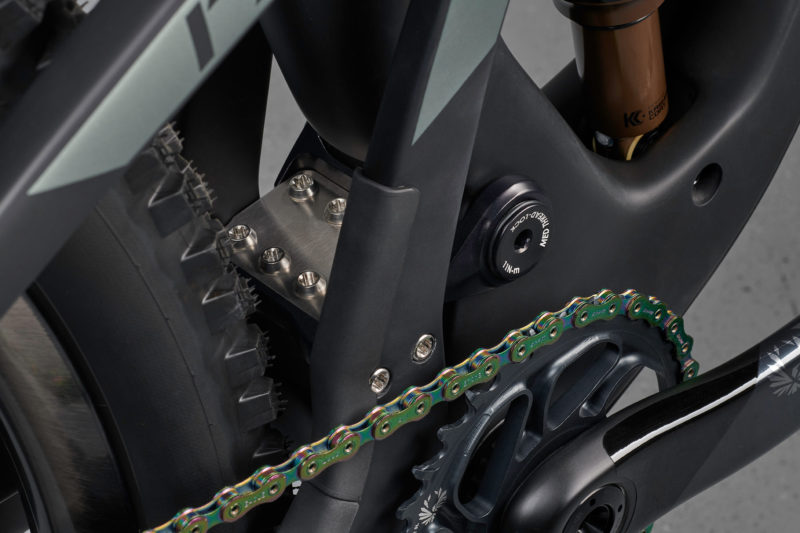
The titanium Living Link Rocker Plate, which replaces a lower linkage and flexes as the suspension compresses (check this video explanation of early prototypes to see how it works). The V2 bike eliminates the sleeve on the rear and instead bolts the plate directly to rear triangle. It’s a cleaner look and should make it easier to clean, too.
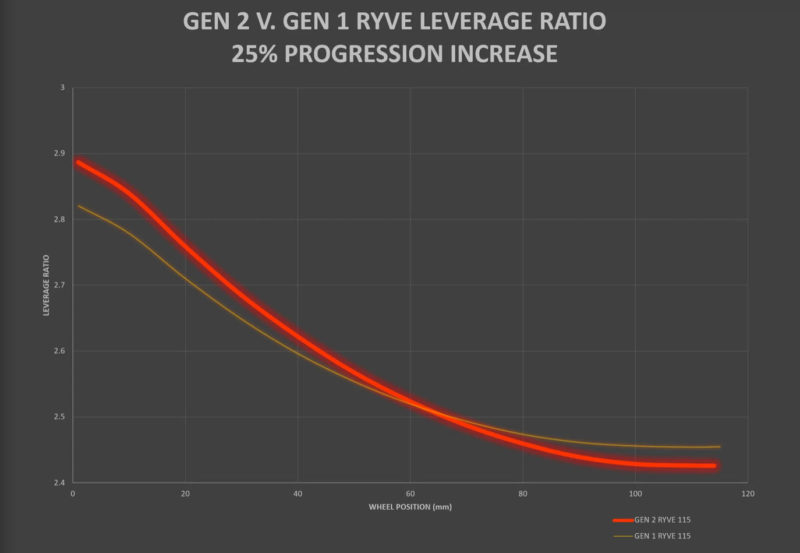
Tweaks to the kinematics give it a higher leverage ratio at the start for better small bump compliance, then a flatter curve through the middle to keep it predictable and consistent where most of the riding happens. It levels off toward the end to help it get through the last bit of travel as the air shocks naturally ramp up.
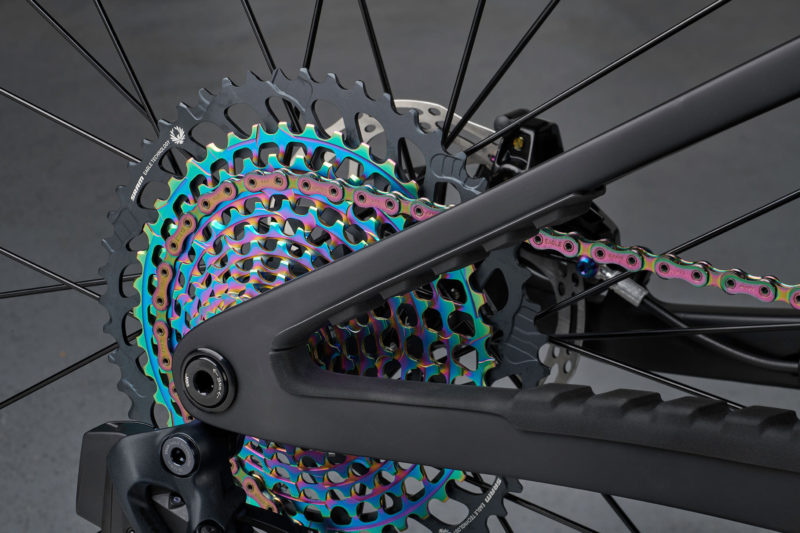
Tighter spacing around the BB means it’s only compatible with direct-mount chainrings with a minimum 50mm chain line, but they say most modern Boost rings have a 52mm spec, and that 52mm-spaced power meter spiders will fit. The rear upgrades to the SRAM direct mount derailleur hanger.
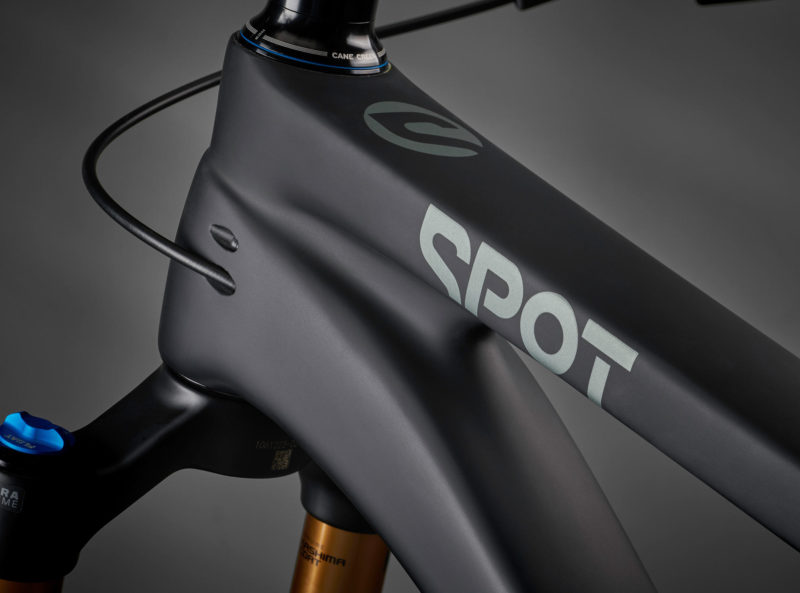
Another (argh) change moves the rear brake hose routing internally. The V1 Ryve 115 used a sleek groove along the downtube to cleanly run it on the outside, but now it joins the dropper post and rear derailleur lines going inside the frame…and (double argh) inside the chainstay, too. Of course, if like most riders you never really replace your brakes or just take it to the shop, it’s a non-issue and you can ignore my grumblings.

It keeps the one-piece axle-plus-brake-mount part, which is metal. It’s designed to drive braking forces into the chainstay, letting them build a lighter seatstay and dropout section.
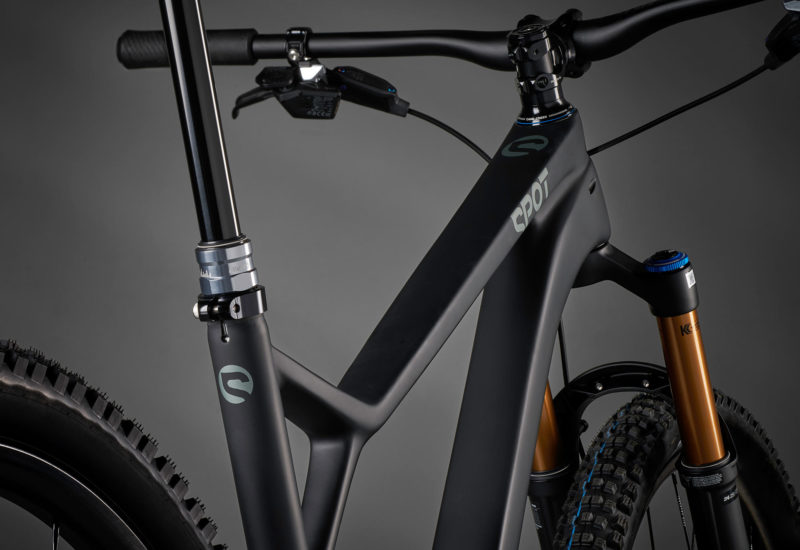
It keeps the low standover, allowing for long dropper posts and nimble handling. The seat angle remains steep, which keeps the saddle forward for a more powerful climbing position, but also (and in combination with long dropper travel), makes it easy to get behind it on steeper descents.
Geo gets predictably longer and slacker, with a bit more reach and a 1.2º slacker head angle. Combined with the increased fork travel, it should make for a very fun, nimble bike.

Four sizes available in four builds and two colors, with claimed complete bike weights as low as 26.5lbs. Full options and geo chart on their website.
